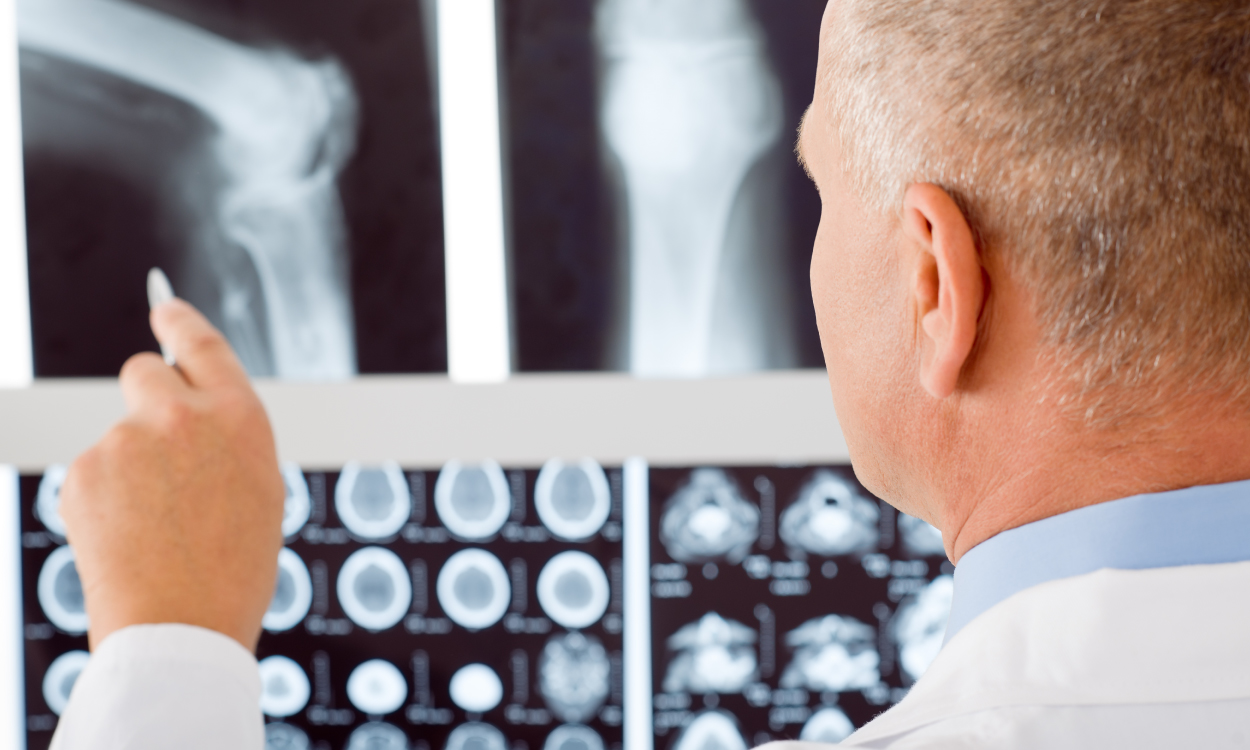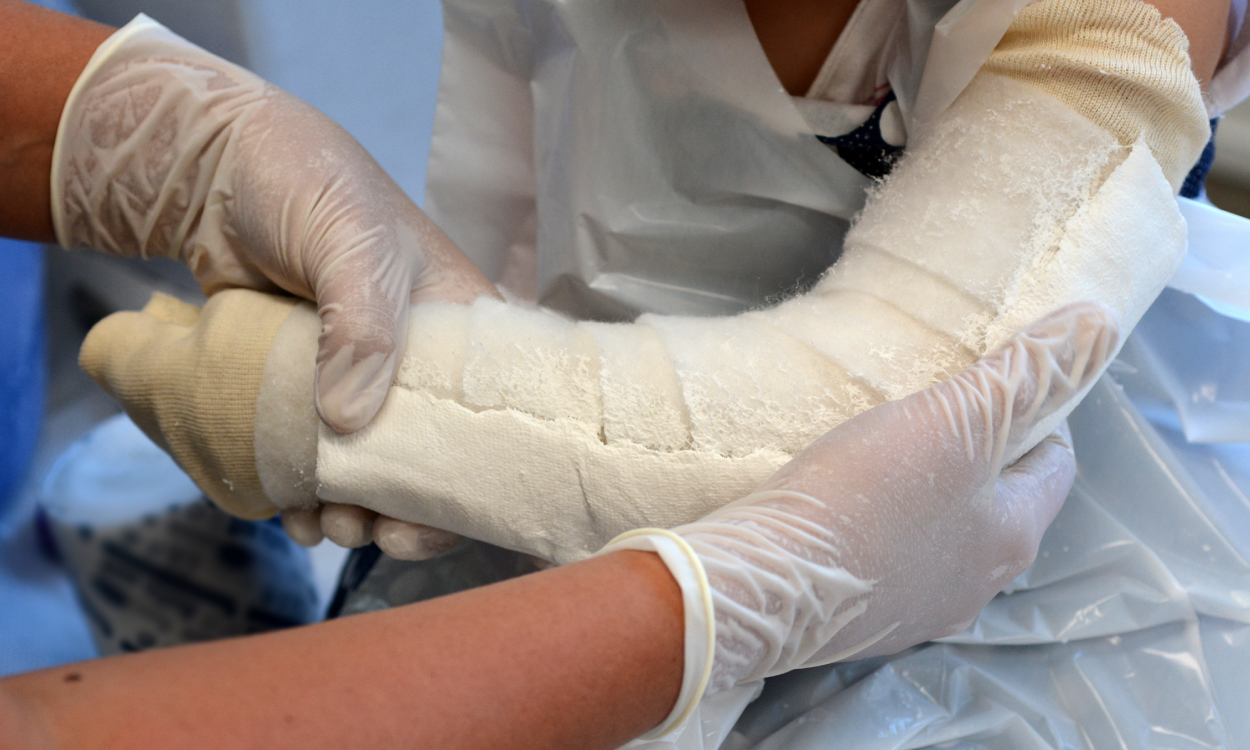Accidents + Trauma
Fractures / Trauma
Midwest Bone & Joint offers comprehensive fracture care for traumatic injuries to the skeletal system. These injuries are common and range from minor non-displaced fractures where the bone is cracked, but is in correct alignment, to severe traumatic fractures of the long bones and joints including the hip, wrist, shoulder, ankle femur, tibia and humorous. These fractures may be displaced, meaning the broken ends are not in alignment, or the bone has broken into pieces, which is called a comminuted fracture.
Our trauma specialists excel at treating acute or chronic fractures and do so with compassionate and timely intervention to restore function, mobility and quality of life.
What is a Fracture?
A fracture is a broken bone. It can be completely or partially fractured in various ways depending on the force and type of trauma. The severity of a break will be determined by the amount of force applied. If slight, the bone may crack. If extreme, the bone can shatter. When the bone protrudes from the skin it is called an open or compound fracture, which is serious because of the risk of infection. When the bone does not protrude through the skin it is called a closed fracture.


What Causes a Fracture?
When force is applied to the bone from a fall or direct trauma, that is stronger than the bone, it will cause a fracture. Traumatic fractures often occur from events such as a fall, auto accident or contact sports. Bones may be weakened by certain conditions such as osteoporosis making them more susceptible to fracture with less severe trauma. In addition, overuse and repetitive forces like running can cause stress fractures. Stress fractures are hairline cracks in the bone and are common in athletes.
Symptoms
- Extreme Pain
- Limited or total inability to move limb, or walk on the injured hip, leg, foot or ankle without intense pain
- Swelling, bruising and possibly bleeding
- Numbness and tingling
- Deformity of the limb due to the misplaced bone


Treatment
When treating a fracture, it is imperative that the bones remain in the correct position and are held in place while they heal. A broken bone heals when new bone is formed and binds the broken pieces together. When a fracture is out of place, it is often necessary for it to be realigned, or reduced, and then held in place with a cast or surgery to place orthopedic hardware, to hold the bones in place.
Closed Reduction
This procedure sets the bones without surgery and allows the bone to grow back together. The surgeon will reposition the bone by pulling or pushing. The patient will receive local anesthesia, a nerve block or sedation before manipulation. After the bone is set, an x-ray will confirm that the bone is in the correct position. Then a splint or cast will be placed on the limb to assure the bone remains in the correct position until it is healed.


Open Reduction with Internal Fixation (ORIF)
This is a surgical procedure to fix a severe break. Open surgery, under general or local anesthesia, may be necessary to reposition the bone into proper alignment so that it can heal. Once in proper alignment, the bone pieces are held in the proper position with implants like metal plates and screws, rods and pins. The fixation hardware is designed to stay in the body and typically there is no need to remove it.
Minimally Invasive Percutaneous Closed Reduction with Fixation
Percutaneous closed reduction with fixation is a surgical procedure that is used to treat fractures by implanting surgical fixation hardware through the skin. The exact technique is determined by the location and type of fracture. Under local or general anesthetic with the aid of imaging technology, the bone will be restored to proper alignment and implants will be placed in the correct location to hold the bone pieces together while they heal. This approach has the advantage of reducing bleeding and infection commonly associated with open surgery and produces only a small scar.
